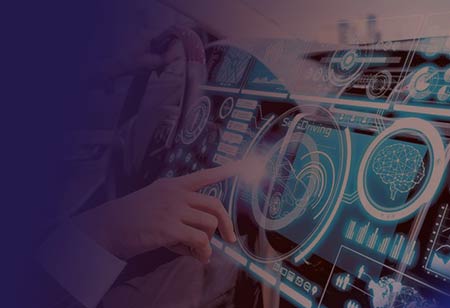THANK YOU FOR SUBSCRIBING
THANK YOU FOR SUBSCRIBING
Be first to read the latest tech news, Industry Leader's Insights, and CIO interviews of medium and large enterprises exclusively from Auto Tech Outlook

By
Auto Tech Outlook | Wednesday, February 01, 2023
Stay ahead of the industry with exclusive feature stories on the top companies, expert insights and the latest news delivered straight to your inbox. Subscribe today.
Today, an estimated 42 percent of American fleets employ IoT technology, and that ratio is steadily increasing.
Fremont, CA: The Internet of Things (IoT) drives innovation in numerous industries, including transportation. As more fleets adopt these connected devices, the industry is improving.
Today, an estimated 42 percent of American fleets employ IoT technology, and that ratio is steadily increasing. These technologies will soon be reshaping the transportation industry. They already exist in many businesses. Here are some of the essential ways that this revolution is influencing the transportation industry's future.
• Location tracking in real-time
The major benefit of IoT is that its interconnectedness provides real-time access to multiple data points. One of the essential applications for this real-time data in transportation is location tracking. IoT positioning systems provide fleet managers complete visibility into where each truck is at any given time. They may then utilize this data to deliver real-time notifications to customers and shipping partners, keeping everyone updated on any changes or delays. It allowed for more efficient route planning and communication with logistics partners and increased customer satisfaction.
• Shipment Quality Monitoring
Trucking businesses may also use IoT devices to monitor the condition of their goods. For example, some items, such as medications and fruit, might readily expire during transportation if equipment fails. Real-time information from IoT sensors may alert stakeholders to these problems, allowing them to take immediate action to prevent spoiling.
Some of the greatest examples are temperature sensors that are linked. These sensors may inform drivers and fleet management if temperatures within a refrigerated trailer fall below a specific level. They can then change their route to bring their refrigerated items to a more convenient place before they spoil.
• Predictive Maintenance
Another significant way the Internet of Things transforms transportation is by enhancing maintenance techniques. IoT sensors may monitor Vehicles using vibration analysis, temperature detection, or fluid sampling. This analysis identifies emerging maintenance issues before they become costly breakdowns.
As IoT device technology advances, these sensors can quickly and precisely identify maintenance concerns. Fleets can achieve previously unattainable levels of uptime while keeping their vehicles in top condition for years. Some of their major expenditures will get drastically reduced, resulting in significant earnings.
• Route Optimization
Data from IoT devices installed in truck fleets may also assist logistics companies in optimizing their routes. Real-time traffic data and vehicle positions can help fleet managers determine whether an alternate route might result in a speedier delivery. This data might be fed into artificial intelligence (AI) analytics algorithms, revealing even more beneficial route adjustments.
Analysis of IoT data may potentially result in longer-term advantages for fleets. Trends in location and delivery time data will develop over time. These patterns can disclose if any frequent routes are inefficient and if there are any better options, allowing for continuous improvements.
 Copyright © 2025 AutoTech Outlook. All Rights Reserved | Privacy Policy | Subscribe | Sitemap | About us | Feedback Policy | Editorial Policy
Copyright © 2025 AutoTech Outlook. All Rights Reserved | Privacy Policy | Subscribe | Sitemap | About us | Feedback Policy | Editorial Policy 
However, if you would like to share the information in this article, you may use the link below:
https://www.autotechoutlookapac.com/news/how-is-iot-transforming-trucking--nwid-1104.html




